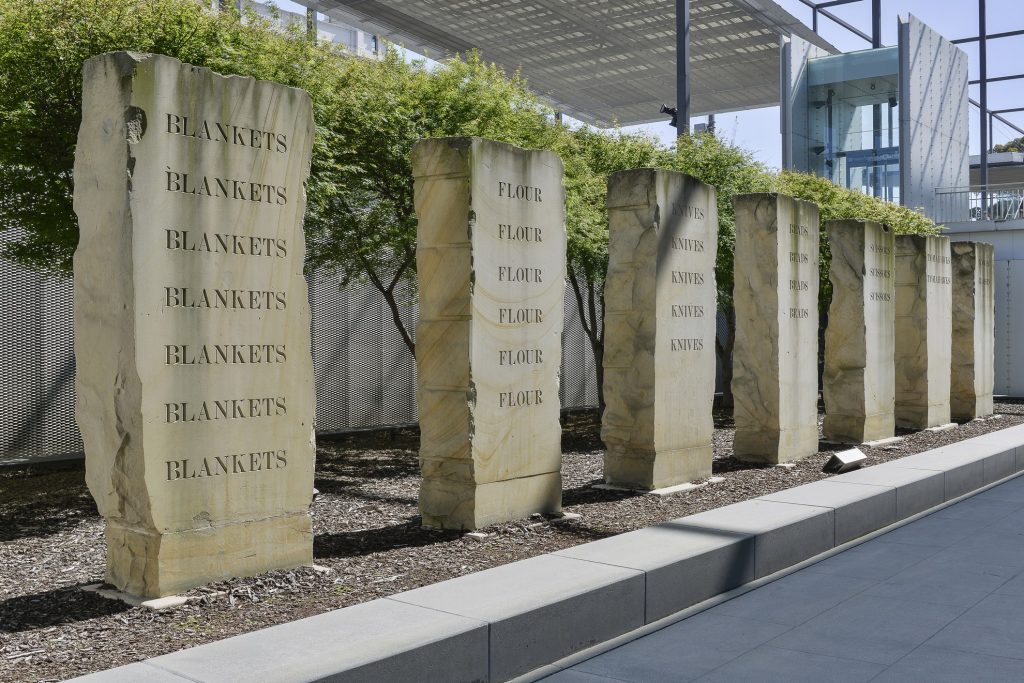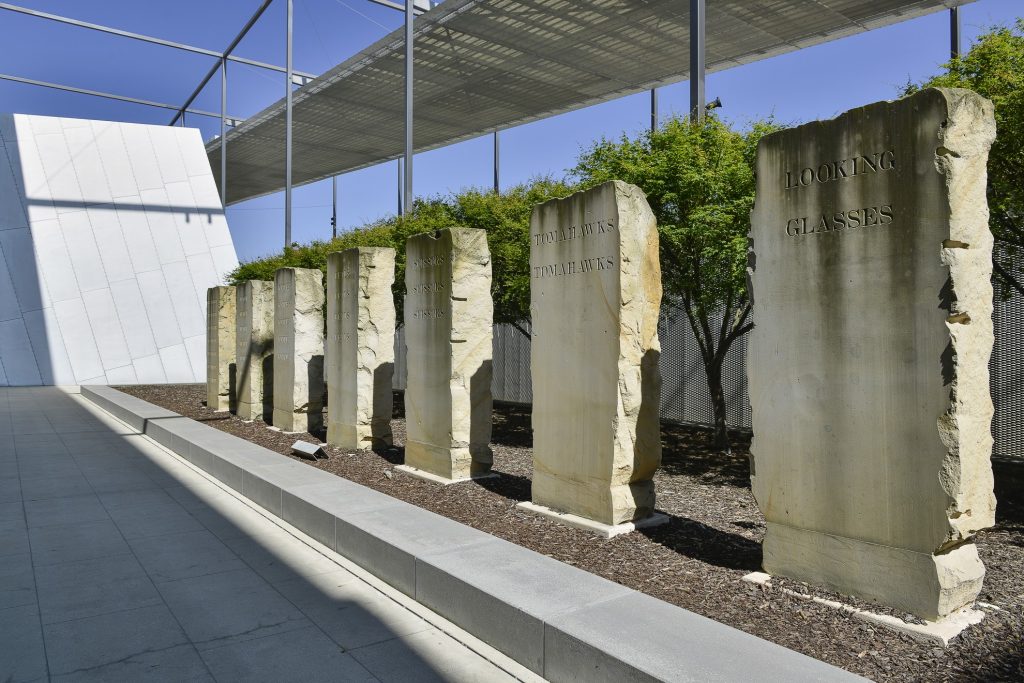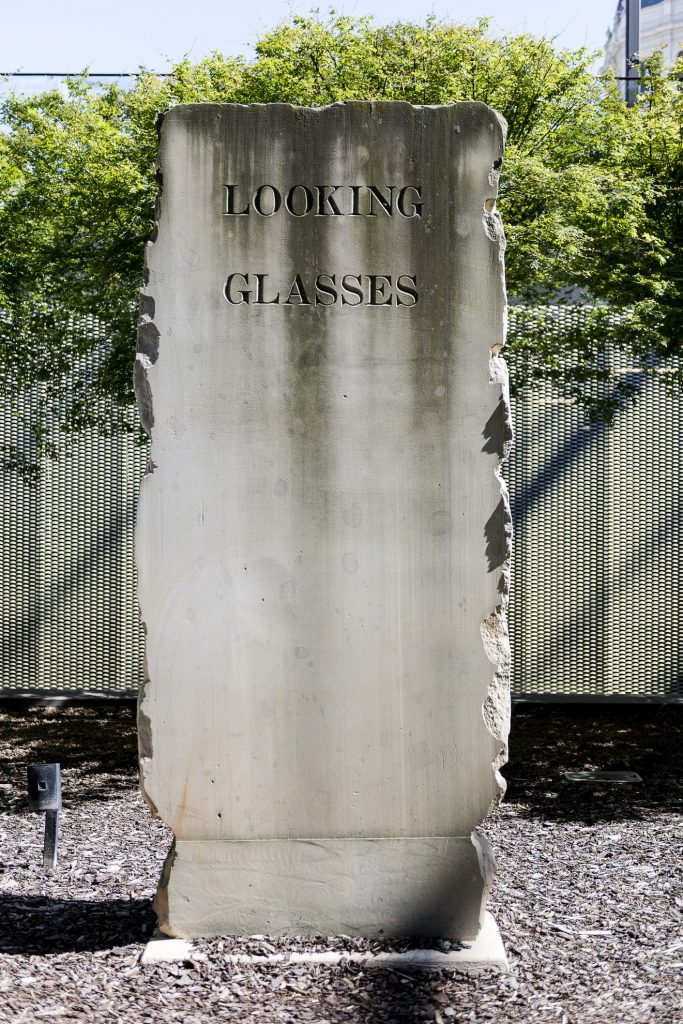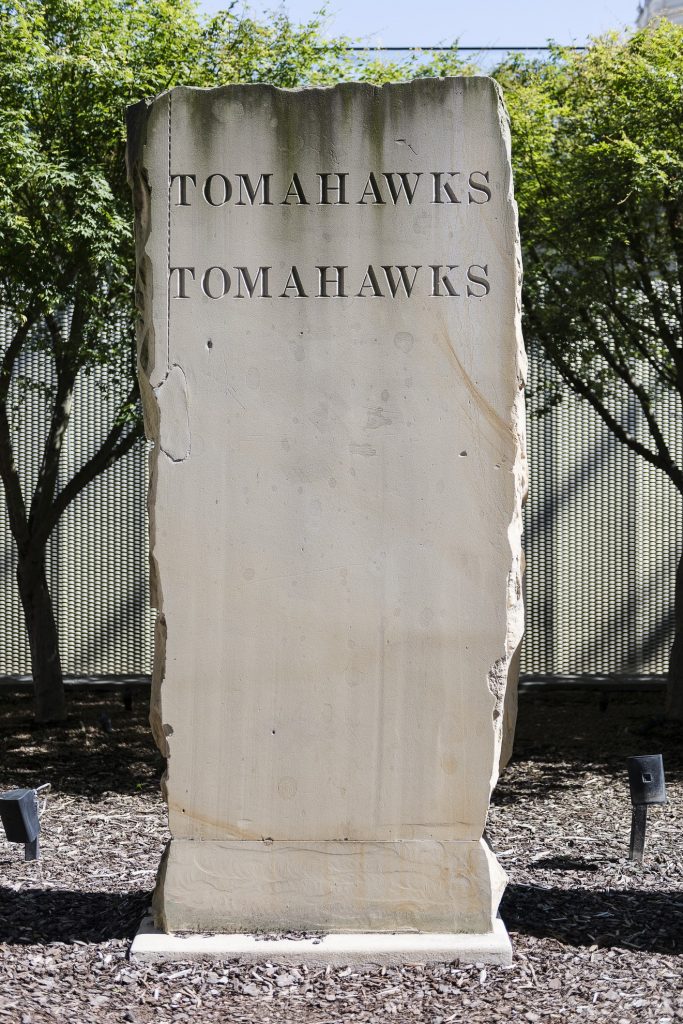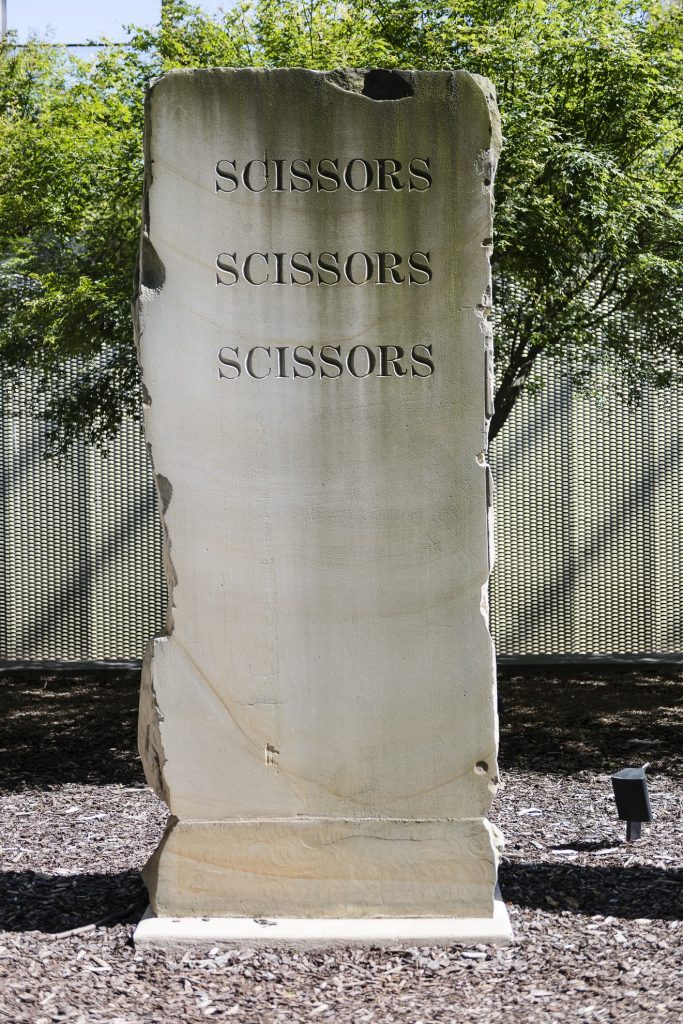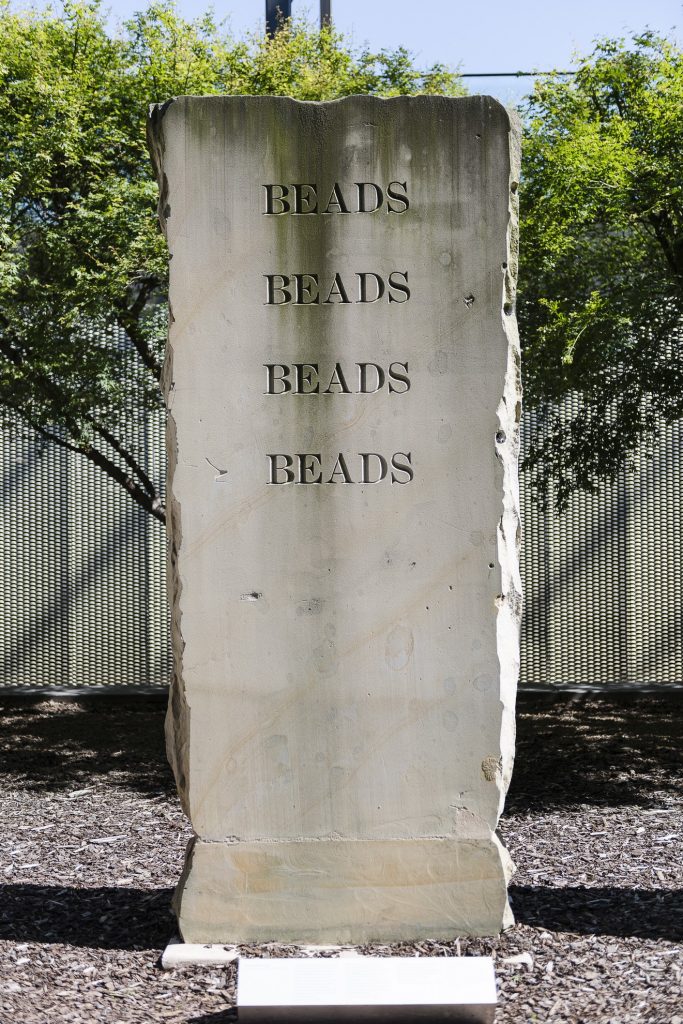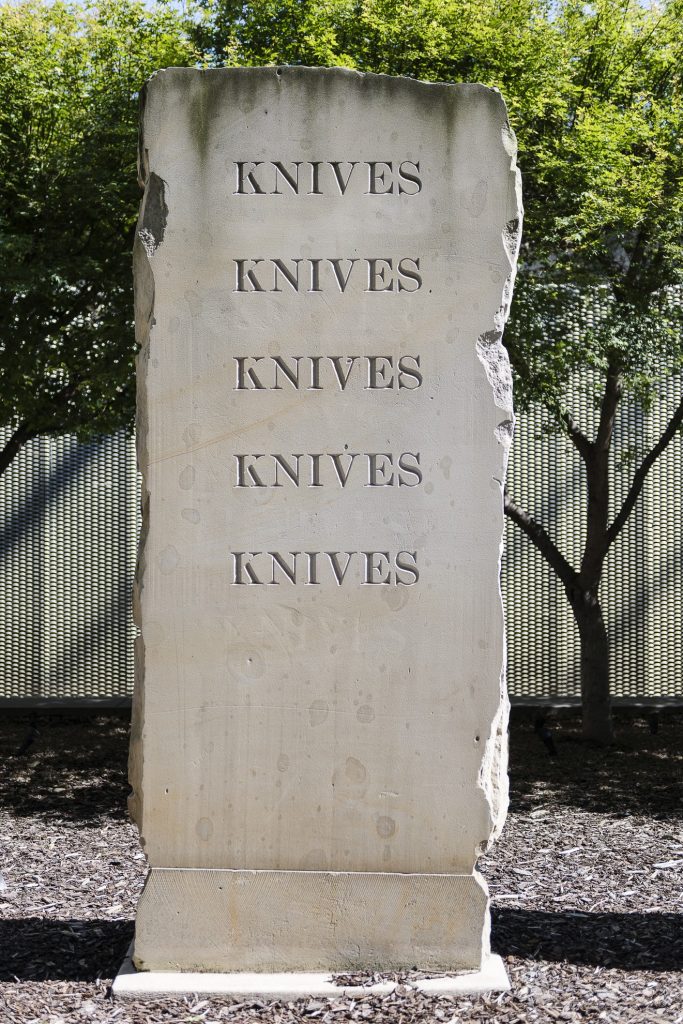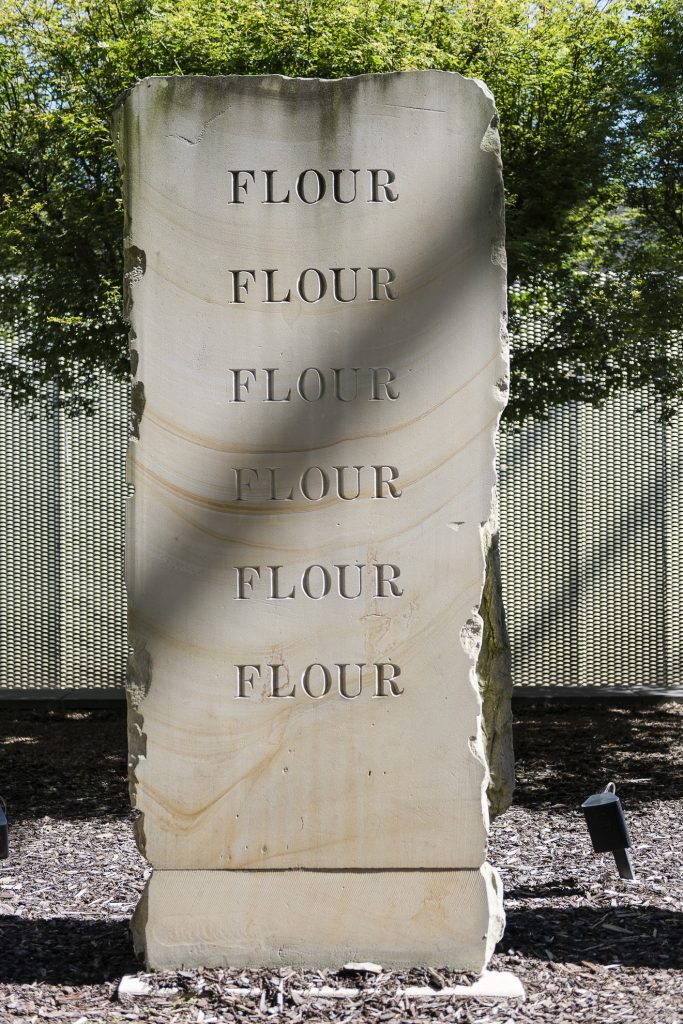Lie of the Land, Fiona Foley, Chris Knowles, 1967 referendum, Aboriginal, Indigenous, 1997, Melbourne Museum
Summary
Location: Melbourne Museum entrance, Carlton
Lie of the Land comprises seven sandstone pillars standing some three metres high. Each pillar is inscribed with a commodity that John Batman lists in his diary as an item he traded with Wurundjeri elders in 1835 to secure 600,000 acres of their land around Port Phillip Bay: ‘blankets’, ‘knives’, ‘looking glasses’, ‘tomahawks’, ‘beads’, ‘scissors’ and ‘flour’. Knowles’ soundscape accompanies this compelling work, with Batman’s entry on the controversial exchange read out in Woiwurrung – the local Indigenous language – and several other languages representing the ethnic groups present in Australia around the time of settlement. The etched pillars are a powerful symbol; tombstone-like, they speak the fate of many Indigenous people through the process of settlement and colonisation.
Lie of the Land was commissioned by the City of Melbourne to coincide with the Australian Reconciliation Convention, held in Melbourne in May 1997, and the 30th anniversary of the 1967 referendum, which gave Indigenous Australians the right to vote. The sculpture was originally sited outside the Town Hall on Swanston Street and was later moved to a forecourt of Melbourne Museum.
Placed near the entrance to Melbourne Museum, this sculpture also speaks eloquently of the relationship this institution once had with Indigenous peoples, collecting often-sacred items and relics, and at times by inappropriate means. In relation to the historical and political nature of this work, Fiona Foley has stated, ‘As the history has been written by the victors, it is only now that the silent histories of the Indigenous populations are given a voice’.
Launched 19 May 1997
